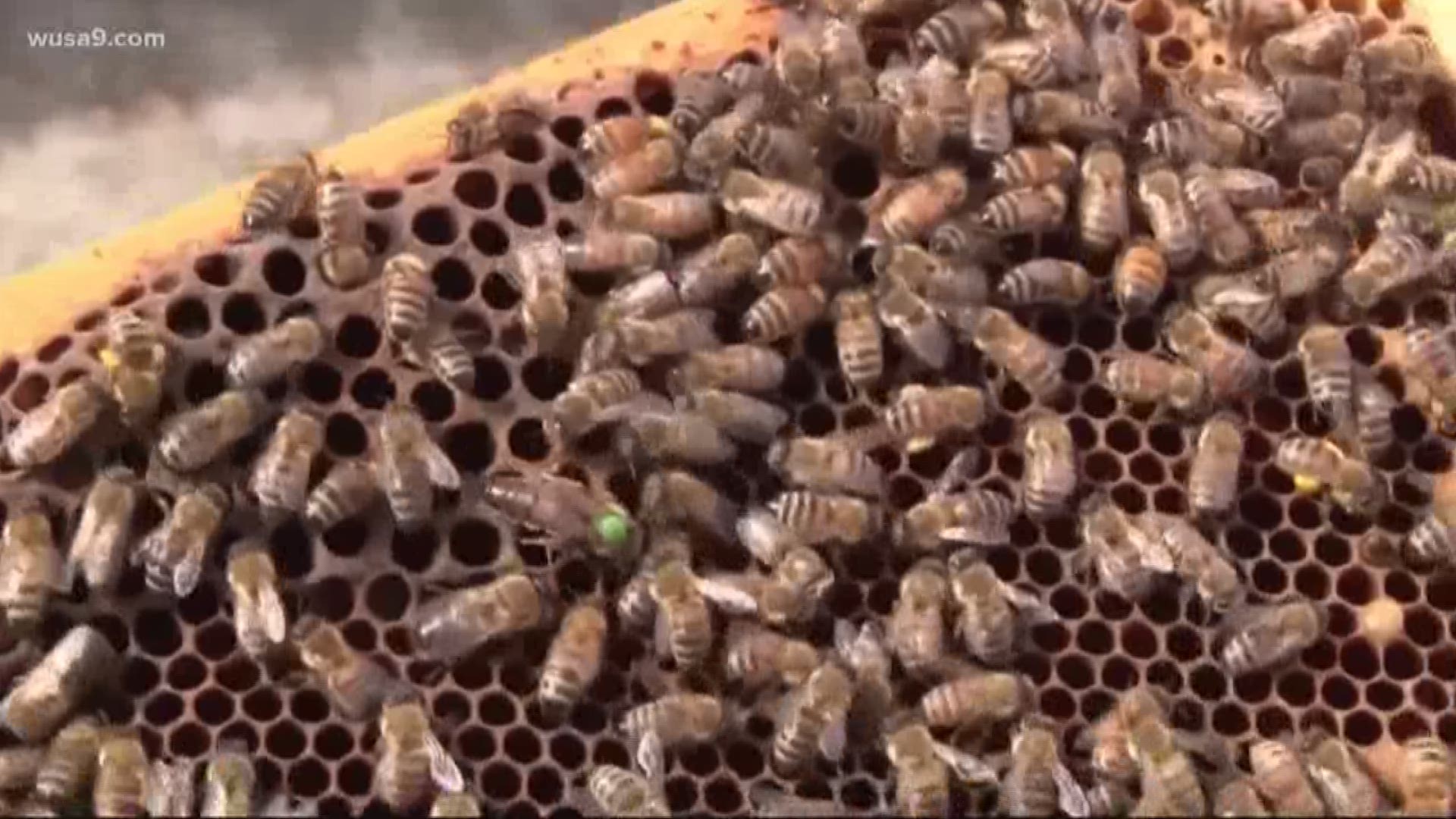WASHINGTON — The nation's capital has declared beekeepers to be essential workers during the coronavirus outbreak.
Spring and summer is when beehives will “swarm,” meaning a queen will take half the hive to make a new hive.
If the swarm isn’t collected by a beekeeper, the new hive can come to settle in residential backyards, attics, crawlspaces or other potentially ruinous areas. And that can create a stinging, scary nuisance.
Beekeepers respond to swarms and carefully transplant them to designated areas such as community gardens, rooftops and even embassies in Washington.
Collecting swarms of bees is challenging at any time, and even more so during a pandemic.
American honeybee colonies have bounced back after a bad year, the annual beekeeping survey finds.
Beekeepers only lost 22.2% of their colonies this past winter, from Oct. 1 to March 31, which is lower than the average of 28.6%, according to the Bee Informed Partnership’s annual survey of thousands of beekeepers. It was the second smallest winter loss in the 14 years of surveying done by several different U.S. universities.
Last winter’s loss was considerably less than the previous winter of 2018-2019 when a record 37.7% of colonies died off, the scientists found. After that bad winter, the losses continued through the summer of 2019, when beekeepers reported a 32% loss rate. That’s much higher than the average of 21.6% for summer losses. Those summer losses were driven more by hives of commercial beekeepers than backyard hobbyists, said bee partnership scientific coordinator Nathalie Steinhauer.
While the summer losses are bad, winter deaths are “really the test of colony health,” so the results overall are good news, Steinhauer said. “It turned out to be a very good year.”
Populations tend to be cyclical with good years following bad ones, she said. The scientists surveyed 3,377 commercial beekeepers and backyard enthusiasts in the United States.

